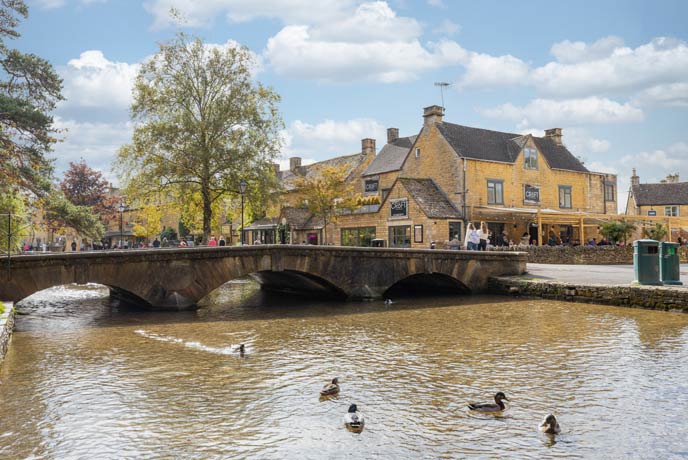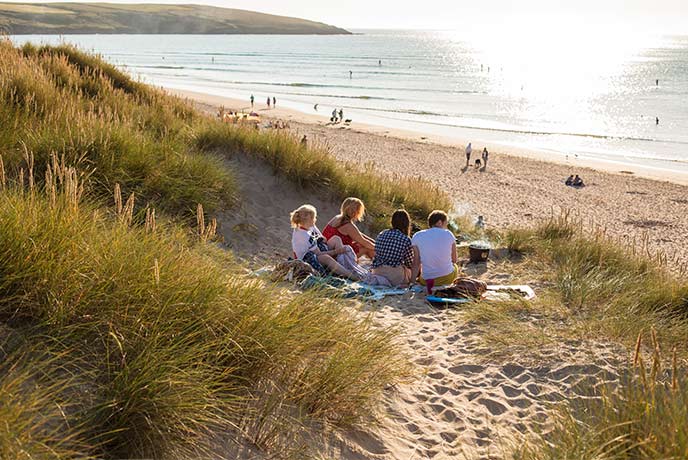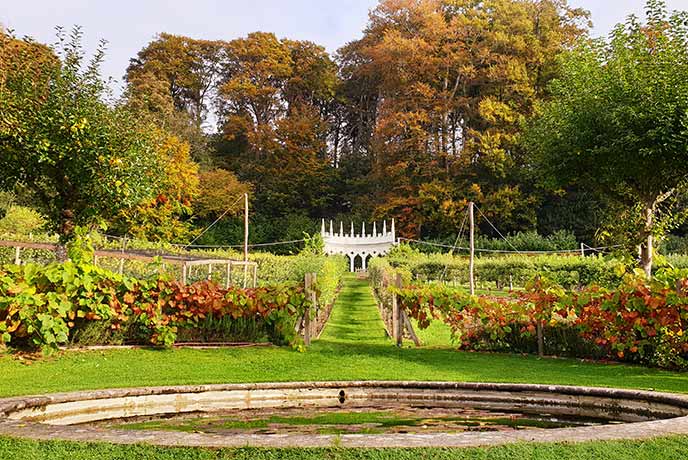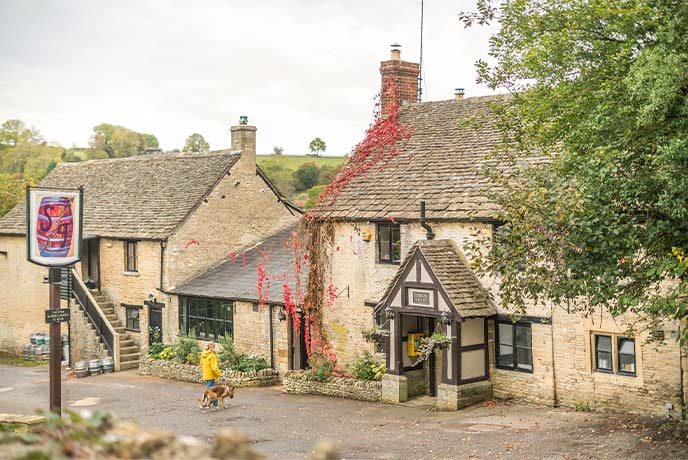Taking yourself off for a woodland walk is one of the most enchanting and calming things to do. Just ask the Japanese – they have a practice called Shirin yoku where they spend mindful time in the forest to find inner peace and wellbeing. Sounds good to us!
The woods and forests of the Cotswolds are particularly beautiful and offer a peaceful retreat away from the busyness of the everyday. From ancient royal forests and carefully coppiced woodland to majestic arboretums and rambling parks, a bracing walk is all you need to blow away the cobwebs and exercise your four-legged friend should they be with you. Afterwards, check out a dog-friendly pub where you can put your feet up and enjoy a hearty meal, or pack yourself a picnic full of goodies from a local farm shop.
Here are a few excellent woodland walks in the Cotswolds to discover for yourself.
Westonbirt Arboretum
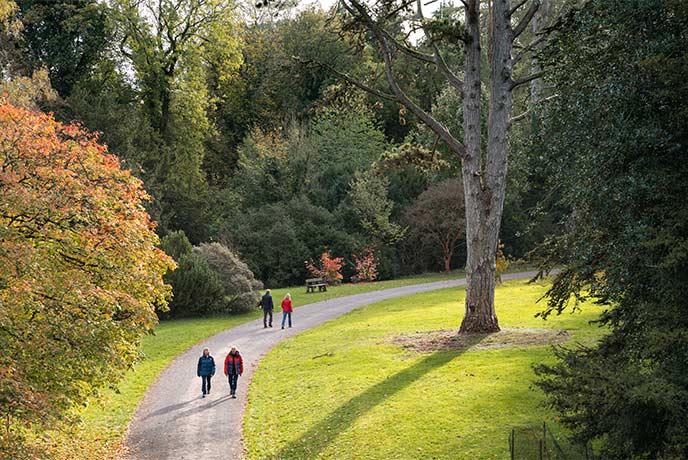
Best for: Gentle walks for all
• Terrain: Easily accessible with tarmac pathways
• Facilities: Café, takeaway kiosk, gift shop, toilets and parking
Westonbirt Arboretum near Tetbury is a 600-acre estate run by Forestry England, and is home to 15,000 temperate trees and shrubs comprising of 3,000 different species from all over the world. The Arboretum is one of the prettiest places in the Cotswolds to visit and a great place for a walk, with 17 miles of pathways winding their way between the trees. Famous for its unique collection of maple trees, rhododendrons, limes (there’s one specimen that’s 2,000 years old) and walnut trees, it is especially spectacular in autumn when the stunning display of fiery colour invites you to fill your camera with a bust of colour. Whatever time of year you visit, there’s something to see, from flowering trees in spring to the visually stunning bare branches of winter.
With paths of differing accessibility, this is a great destination if you have limited mobility or a little one in a pushchair. You can even hire mobility scooters and wheelchairs, though it's best to book these in advance of your visit. While the Old Arboretum is a dog-free area, the huge Silk Wood welcomes your four-legged friends and has lots of space for them to run around, so everyone can enjoy the beautiful spaces!
There are lots of other great things to do here, such as the Westonbirt Woodworks where you can watch traditional craftspeople create works of art from the wood taken from fallen trees - you can even have a go yourself (this must be booked in advance). As well as a café and takeaway kiosk (great for walking with a warming latte in hand), you can bring your own picnic and find your own special tree to sit under.
Woodchester Park
![]()
Best for: Regency era strolls
• Terrain: Uneven, undulating, and steep in places
• Facilities: Café, two car parks (Tinkley Gate and Buckholt) and a toilet at the Tinkley Gate entrance
National-trust owned Woodchester Park is a stunning 18th and 19th-century landscaped estate located in a gently-sloping valley near Stroud. With a chain of five lakes, an unfinished mansion (not owned by the National Trust) and a 19th-century boathouse, there’s plenty to see and do in this wooded paradise whatever time of year you visit. Why not pick up some tasty treats from the farmer’s market at nearby Stroud for a woodland walk followed by a picnic - a lovely way to spend a sunny day!
Take the trail from the recently-opened Tinkley Gate that winds through a wooded valley and rippling grassy plains – both a home for a host of wildlife including red kites, foxes, deer and rabbits. The lakes are home to carp, which spawn in late spring, as well as a heronry that resides on a protected island on the last lake, and the mansion and boathouse are a mecca for the rare greater and lesser horseshoe bat. Other bats such as the pipistrelle, brown long-eared bat, and daubenton flit amongst the trees and over the lakes and ponds – it’s no surprise that the park is a Site of Special Scientific Interest (SSSI).
There are two entrances to the park, both with car parks, and you’ll find the café and toilets at the Tinkley Gate entrance. For little ones, there’s a nature playground to explore, and if it’s wet (or recently has been), it’s best to wear good sturdy footwear. As the mansion is privately owned, the opening hours are different and it’s closed over winter, so it’s best to check their website for opening times to avoid disappointment.
If you have time, pop into nearby Woodchester Vineyard and pick up a few bottles of something special to take back to your holiday cottage – after all that walking, you deserve it!
Wychwood Forest

Best for: Nature enthusiasts
• Terrain: Uneven woodland paths, stiles, and kissing gates
• Facilities: None – it’s best to visit a nearby town or village, such as Shipton-under-Wychwood, Burford or Chipping Norton
Set deep in the heart of the Cotswolds, the incredible landscape of Wychwood Forest lies between Burford and Chipping Norton and once covered 182 square miles from the Cotswolds all the way to the floodplains of the Thames. Also known as Royal Forest, this ancient land of broadleaved trees also comprises grasslands, heaths, and marshes, and today The Wychwood Forest Trust’s role is in conserving these incredibly important sites.
Wychwood Forest has a huge number of paths and trails to explore, including the 37-mile circular Wychwood Way that explores the heart of the forest, passing through nature reserves, Bronze Age settlements, and river valleys – it even has its own guidebook. If that’s a little far for you, there are numerous circular walks throughout the area, ranging from 3 to 7 miles in length and passing through gorgeous woodland, bucolic farmland, Roman villas, and quaint villages as you go. If you’re looking to walk through the oldest parts of the forest, there’s just one route on a Public Rights of Way through the Cornbury Estate, the rest is privately owned.
Another area of note is the stunning Singe Wood in Hailey, private land recently gifted to the Trust and unique in that it’s unlikely to have been disturbed much since the 12th century. You’ll find incredible flora and fauna in residence here, including swathes of bluebells in spring.
The fascinating area used to be famous (or infamous) for its rather raucous Forest Fair, which ran every July from 1786 but was banned in 1853 after being deemed too rowdy! Luckily for us, it was resurrected in 2000 by the Wychwood Forest Trust to promote the crafts and community of the area, and is well worth a visit.
As well as offering beautiful woodland walks, the Trust also hosts numerous events throughout the year, such as hedge-laying courses, tree identification courses, and nature walks.
Batsford Arboretum
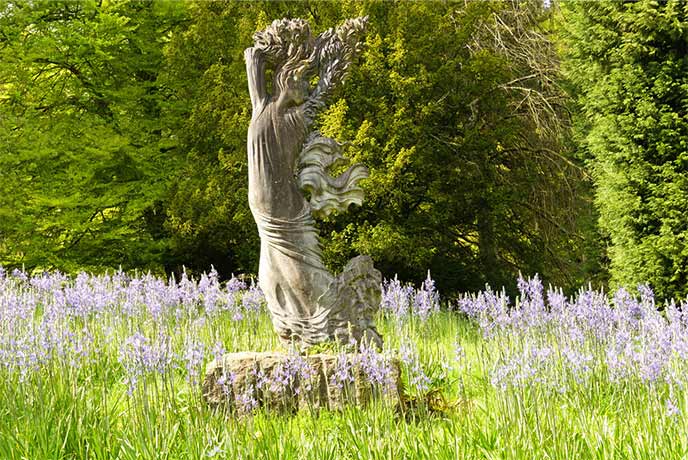
Best for: Stunning oriental trees
• Terrain: Paths, but steep in places as situated on a hillside
• Facilities: Café, garden centre, toilets, car park, shop
The incredible 60-acre estate of Batsford Arboretum is home to one of the largest collections of trees in Britain and is a fantastic place for a walk throughout the year. From the graceful arc of the Japanese cherry blossom in spring to the Instagram-worthy riot of autumnal colours, the trees offer a stunning backdrop as you weave your way along the paths, passing hidden gardens, tinkling streams, and stunning views over the Evenlode Valley as you go.
The Garden Terrace Café is the perfect stop off for a bite to eat and offers lovely views from the wooden deck, while the green-fingered will love having a rummage in the walled garden plant centre. While the arboretum might not be fully accessible to those with limited mobility, you can hire ‘Tramper’ all-terrain mobility scooters (a short training session is provided before use and you’ll need to book them in advance). Dogs are welcome throughout the arboretum but should be kept on leads at all times.
For an extra-special walk, park up in the nearby town of Moreton-in-Marsh and walk the Monarch’s Way to the arboretum, a 1.7-mile stroll along a picturesque woodland footpath that takes about 35 minutes.
Foxholes Nature Reserve
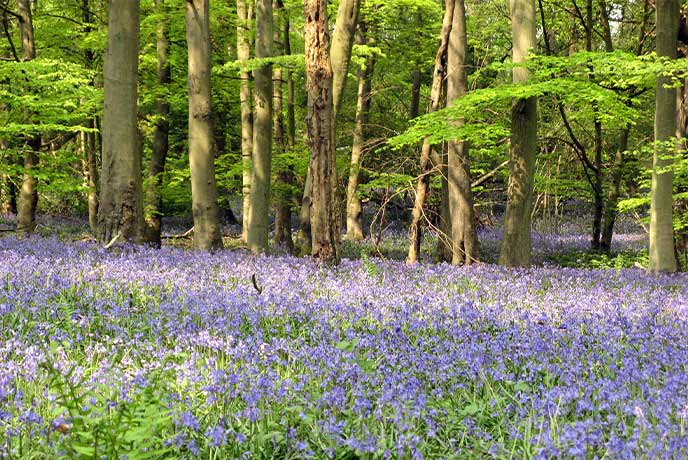
Best for: Amazing wildflower displays
• Terrain: Gently sloping natural woodland paths (muddy when wet), kissing gate
• Facilities: Limited parking roadside parking near Shipton-under-Wychwood on the road towards Bruern
This tranquil 165-acre reserve near Chipping Norton comprises woodland that gently slopes down to the River Evenlode and has a lovely woodland walk that’s 1.75 miles long, making it perfect for all the family – just follow the Badger Way markers. Alternatively, there’s a longer ‘Wild Walk’ of 7 miles that passes through the ancient woodland as well as rolling countryside and sleepy villages.
Spring is a particular highlight at Foxholes when the woodland floor is a riot of colour with primroses and violets, with bluebells carpeting the area in May. During summer, there are towering foxgloves to discover, while autumn is spectacular with the bronzing of the leaves and mushrooms popping up out of the undergrowth like little hats – at one point, over 200 different species of fungi have been recorded here. Animals love it here too, with seven species of bats living calling the reserve home, as well as a plethora of birds, mammals and butterflies (who particularly like the wild honeysuckle).
If all that has made you hungry, whisk yourself to a cosy Cotswold pub to put your feet up and enjoy a hearty lunch, such as at The Hare in nearby Milton-under-Wychwood.
Siccaridge Wood

Best for: Shorter and spritely walks
• Terrain: Muddy, uneven, and steep in places. Flatter stony footpaths are situated higher up
• Facilities: There’s a layby for parking on the other side of the bridge from The Daneway Inn and also at the start of the ridgetop path
Lying not far from Cirencester in the Frome Valley, Siccaridge Wood is a smaller but nonetheless beautiful semi-natural woodland that sits next to Sapperton Valley and Daneway Banks nature reserves as well as the Thames and Severn Canal. Covering around 66 acres and with records dating back to 1576, Siccaridge Wood is home to numerous species of trees such as silver birch, ash and maples, and is well known for its population of dormice, which are monitored regularly by the National Dormouse Monitoring Scheme.
Coppiced regularly to allow the light onto the woodland floor, there’s a huge array of life here with beautiful flowers including bluebells, lily-of-the-valley and bird’s nest orchids, and insects such as wood ants (you might spot their nests, huge mounds of earth, dotted around).
There are numerous paths that run through the woods, and visitors are asked to keep to them so as not to disturb the dormouse boxes and avoid treading on wildflowers. The wood also forms part of the Golden Valley Wildlife Way, which stretches between Stroud and Cirencester and passes through Strawberry Banks, Daneway Banks, and Three Groves Wood.
If you’re walking on a Sunday, head to nearby Cirencester and The King’s Head, one of the best places in town for a wholesome roast dinner.
Laurie Lee Wood
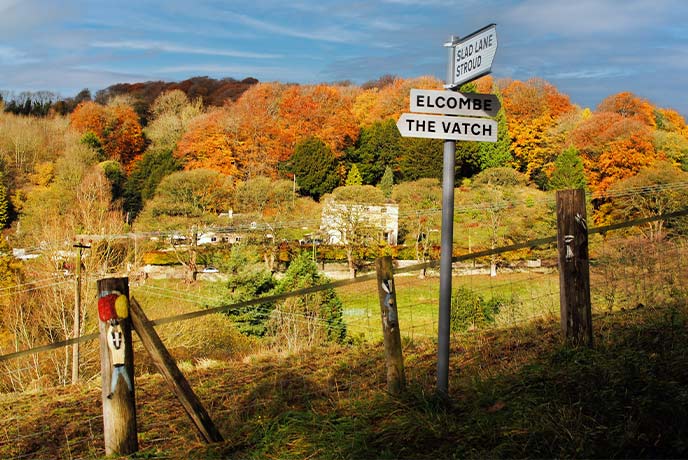
Best for: A literary walk
• Terrain: Uneven pathways and steep in places
• Facilities: It’s best to park in the nearby village of Slad or in one of the laybys on Knapp Lane
Laurie Lee Wood, named after the author of Cider With Rosie, lies in the Slad Valley near Stroud. A pretty 7.4-acre woodland that’s been around for hundreds of years, it was owned by the Lee family before being purchased by the Gloucestershire Wildlife Trust in 2013. Home to some less common species of trees and a rich array of flora and fauna such as bluebells, wild garlic, fungi, woodruff and the rare white helleborine orchid, it’s a magical haven away from the hubbub of everyday life – and unsurprisingly Laurie Lee set his best-selling novel here.
You’ll pass through the woods as you walk the Laurie Lee Wildlife Way, a 5.3 circular walk within the Slad Valley. You’ll find a bench in the heart of the woodland, the perfect spot for a rest and a picnic in the dappled shade.
Feeling inspired to pull on your walking boots? Take a look at our beautiful holiday cottages in the Cotswolds and start planning your woodland adventures today.


